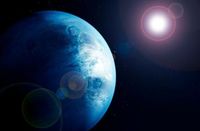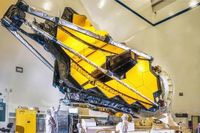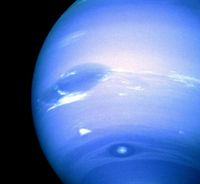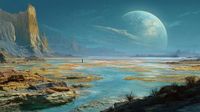In a groundbreaking discovery, astronomers from the University of Cambridge have announced potential signs of extraterrestrial life on the planet K2-18b, located 120 light-years away in the constellation Leo. Using the James Webb Space Telescope, scientists detected dimethyl sulfide (DMS) and dimethyl disulfide (DMDS) in the planet's atmosphere—chemical compounds that, on Earth, are produced exclusively by biological organisms.
This revelation was made on April 17, 2025, and marks what researchers are calling the most convincing evidence yet of life beyond our solar system. K2-18b, classified as a sub-Neptune type planet, is significantly larger than Earth but smaller than gas giants like Neptune. Its temperature is thought to be similar to Earth's, and it is believed to possess vast oceans and a hydrogen-rich atmosphere.
"This is a revolutionary moment. For the first time, humanity has seen potential biosignatures on a habitable planet," stated Nikku Madhusudhan, the lead researcher of the study. The presence of DMS and DMDS suggests that K2-18b could be teeming with microbial life, as these compounds are typically emitted by marine phytoplankton and algae on Earth.
However, scientists urge caution. They emphasize that while the findings are exciting, they do not confirm the existence of life. Instead, they indicate a possible biosignature—an indicator of biological processes that requires further investigation. Skeptics point out that K2-18b might not be suitable for life as we know it, potentially being a massive rock with a dense, hot hydrogen atmosphere or a magmatic ocean.
The discovery was made possible by the advanced capabilities of the James Webb Space Telescope, which can analyze the light passing through a planet's atmosphere. This allows scientists to identify the gases present based on the light spectrum. Both DMS and DMDS exhibit specific spectral characteristics that indicate their presence in K2-18b's atmosphere.
In previous observations, scientists had hinted at the presence of methane and carbon dioxide on K2-18b, but the detection of DMS and DMDS represents a significant leap forward in astrobiology. Madhusudhan noted, "We are entering an era of observational astrobiology, where we can detect biosignatures on potentially habitable planets. This is just the beginning of understanding these exotic worlds."
Additional observations and laboratory experiments will be crucial to understanding the implications of these findings. According to Matthew Nixon, a planetologist from the University of Maryland, it is essential to recreate the possible conditions on sub-Neptune planets to see if DMS behaves similarly to how it does on Earth.
The research team has achieved a statistical significance level of three sigma, meaning there is only a 0.3% chance that their findings are incorrect. This level of confidence is significant for scientific discovery, although it still falls short of being classified as a definitive scientific breakthrough.
As the search for extraterrestrial life continues, scientists are also exploring various environments within our solar system that could support life, including Mars, Venus, and icy moons. The discovery on K2-18b adds a new dimension to the quest for life beyond Earth, opening up exciting possibilities.
In conclusion, while the findings regarding K2-18b are promising, the scientific community remains cautious. Further research is necessary to confirm whether this distant world indeed harbors life. The implications of such discoveries could reshape our understanding of life in the universe, with Madhusudhan suggesting that we may look back in a decade and recognize this moment as a turning point in the search for extraterrestrial life.





